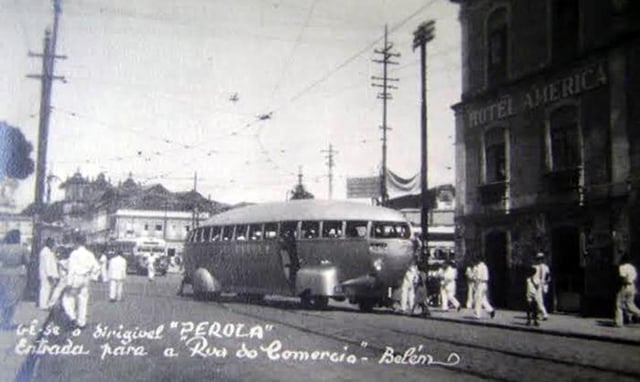
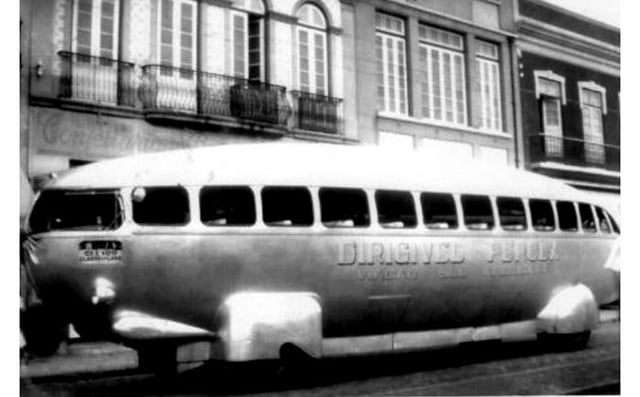
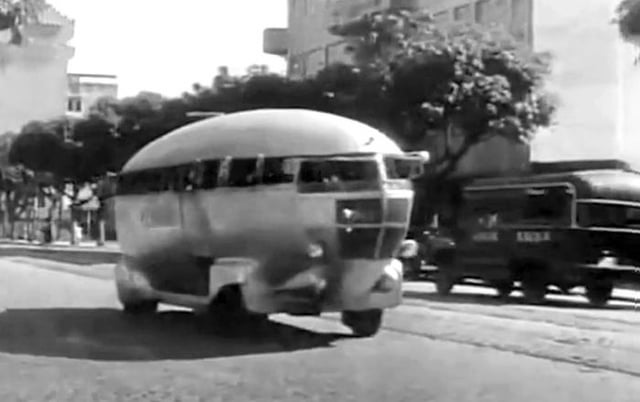
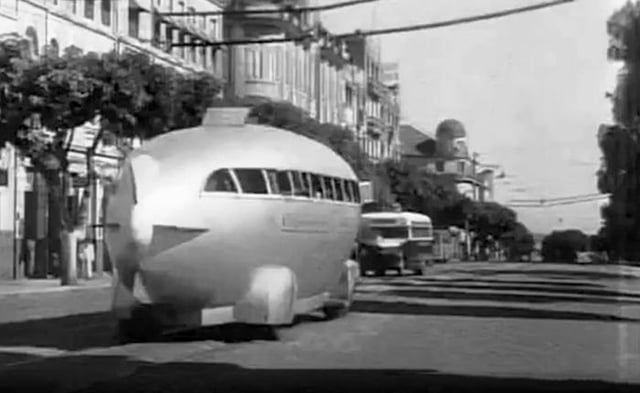
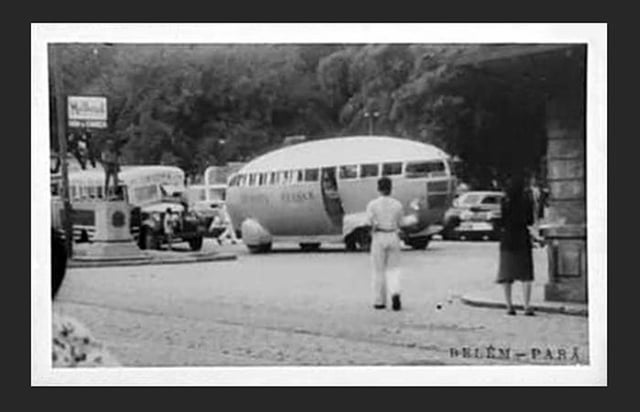
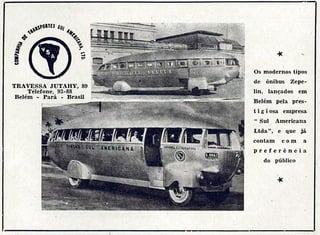
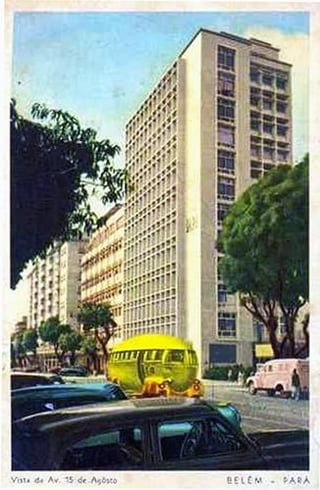
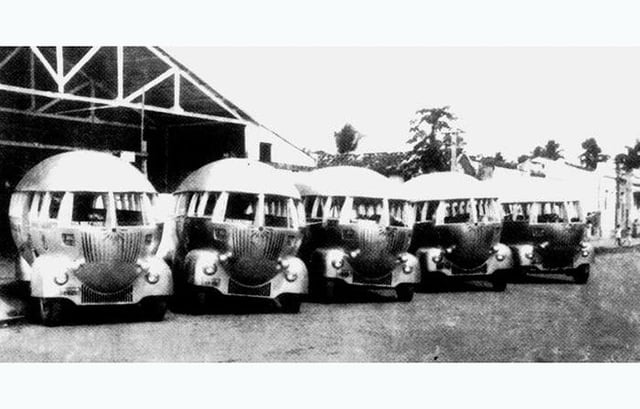
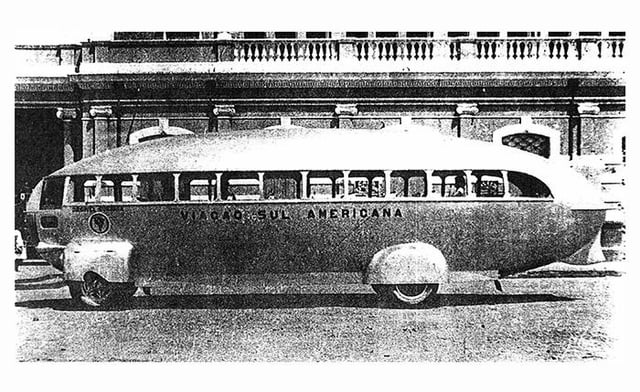
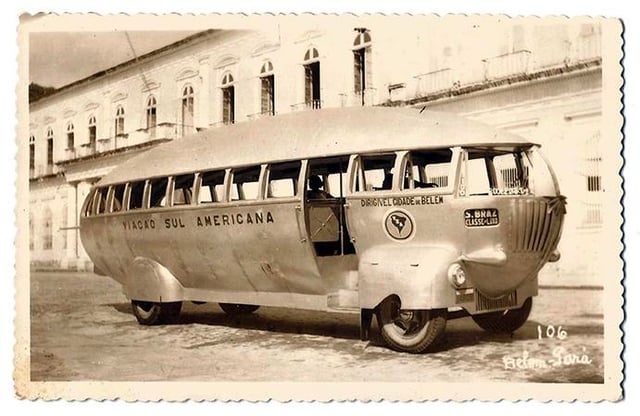
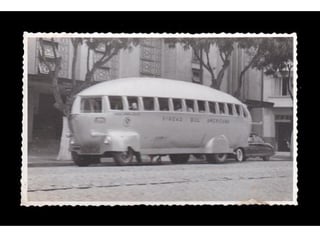
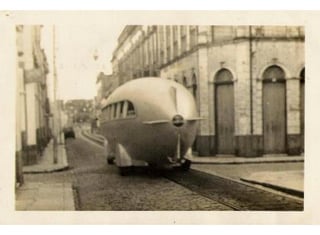
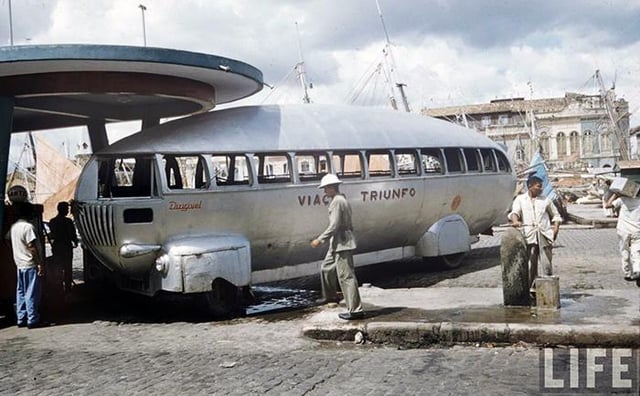
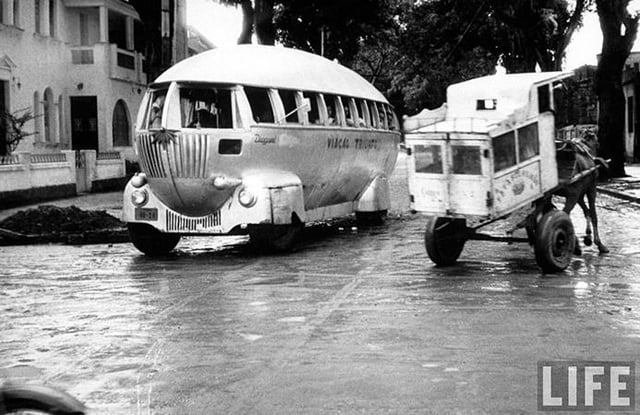
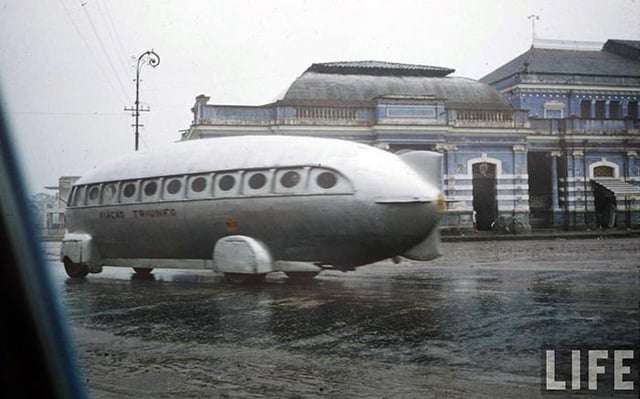
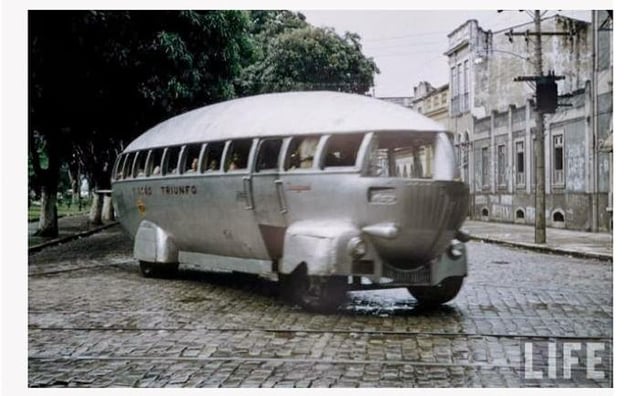
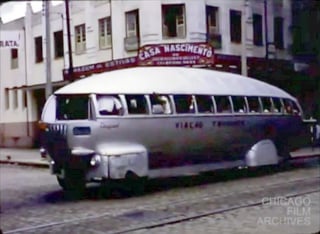
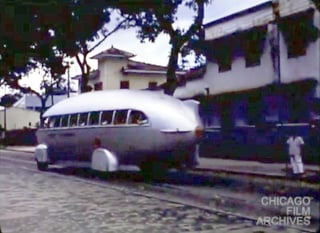
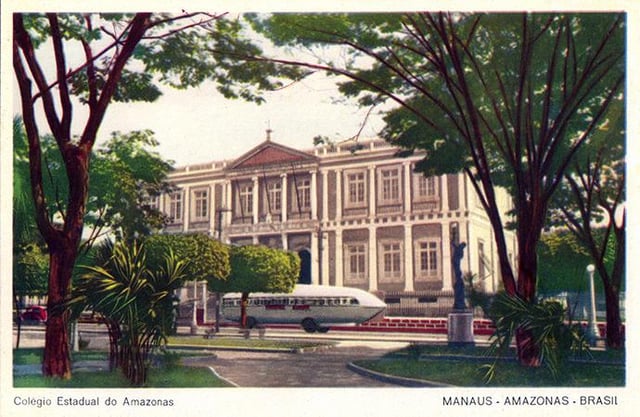
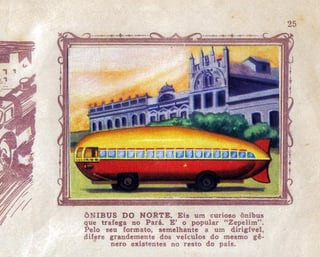
Zeppelin buses, also known as "land airships", were an iconic landmark in public transportation in the city of Belém, capital of the state of Pará, Brazil. Inspired by the shape of airships, these innovative vehicles circulated through the city streets during the 1940s and 1950s, leaving a lasting mark on the memory of the people of Belém.
Manufactured in a city in the remote North Region many years before the emergence of the Brazilian automotive industry (which only began in the mid-to-late 1950s with the first car being the Isetta, produced by Romi in 1956) using only the limited local technical resources, but still not dispensing with a personal style, unique in the world, these buses illustrate Brazilian inventiveness and creative capacity, even when we lack basic technical and formal instruments already universalized in other cultures.
Zeppelin buses were known for their artisanal construction. The bodies were made of wood, iron and tinplate, painted on the outside in aluminum color, and covered in padded leather on the inside. They had headlights on the fenders, a single entrance door, and windows initially without glass, but with curtains, similar to the trams of the time. The bodies of the buses were placed on the chassis of medium-sized trucks that were North American in origin. The vehicles were "manned" by "stewardesses" instead of ticket collectors.
Although nicknamed zeppelins, their body style was more likely inspired by the observation airships operated by the US Navy in the final phase of World War II than by the distant Zeppelin passenger ships, whose South American route did not serve the Amazon. There were two bases for such balloons (called Blimps) in the region – in the Territory of Amapá and in Igarapé-Açu, a small town 110 km (67.35 mi) from Belém. On their way to patrol missions in Brazilian territorial waters, the airships were frequently seen in the skies over Belém between 1943 and 1945.
Spatially limited to the region, the zeppelin buses also carry an important symbolic meaning. Just as passenger rail transport produces affective images in the collective unconscious and brings back deep emotional memories even for those who never used it, the zeppelin is still strongly present in the memory of northerners, especially those from Belém, as a historical landmark, a childhood memory and a nostalgic souvenir, “something from a good time that is gone forever”.
As the memoirist from Pará, Armando Dias Mendes, recalls, they: “were a major attraction for the kids for a long time, for more than a decade, if my memory serves me right. Dressed in their best Sunday best, a good idea for children was to take a ride on the ‘Circular’, feeling like they were on cloud nine – the precursors of astronauts…”.
Another testimony from the time, recorded in the book Cidade dos Mestres: Belém do Pará em Memórias de Professores, tells us: the zeppelin “was silver and more expensive. It traveled all over the city and was the favorite for Sunday afternoon tours, the traditional ‘bus ride around the city’. So when it arrived, a lot of people didn’t get on it because they didn’t have the money, right? So the people who had the money got on it and cleared the line a little.” An attraction in Belém, the buses even inspired a carnival march in the 1950s: “Mommy, I want, I want / To ride a zeppelin / With so many good women / On hand, it’s up to me. // Every Sunday, it’s too much / The movement on the São Brás line / People here, people there / And the stewardess never tires of charging.”
The first model was built in 1948, in a “car repair and bus manufacturing workshop” belonging to the Tavares family, in Belém. The wooden body, covered with steel sheets and linoleum and painted entirely silver, had only one door; the windows did not have glass, but curtains, like those found on trams. It was named Dirigível Pérola (Airship Pearl). In the early 1950s, the owner of Pérola provided at least one more body with a similar style, built by another workshop in Belém. As the few available images show, the vehicle had a wide front grille and appeared to be disproportionately tall; the position of the headlights was the same as those of the first zeppelin.
Also in 1948, a similar vehicle was prepared in Manaus (AM), in the workshop of João Barata Jr., as reported at the time by the Jornal do Comércio of that city. Interestingly, the Barata family lived next door to the manufacturers of the first Pará zeppelin, with whom João Barata Jr. probably had relations. Informed that the Tavares family had patented the project, Barata Jr. made some changes to the design of his bus. Interviewed by Jornal do Comércio, he stated: “My ‘zeppelin’ is not at all the same as the one from Belém. To this end, I have been doing some ‘dribbles’ so that, if this version of the patent registration by the Pará businessman is true, I can prove that the Amazon ‘zeppelin’ is not the same as the one from Pará.”
In 1950, Viação Sul Americana was founded in Belém and ordered five new vehicles of this type, which were later joined by the pioneering Dirigível Pérola. The two “models” differed in the position of the headlights (placed on the fenders in the newer buses), the number of windows (13 in the old one, 12 in the new ones) and the engine cooling grille (absent in the Pérola, which had a “futuristic” design in the last five).
In 1955, a bus owner from Manaus ordered five new Zeppelins in Pará to add to his small fleet of three cars. This time the result was a long vehicle with 17 windows (it is estimated that it could seat around 70 passengers), with sliding windows for passenger protection, and as slim and elegant as a true Zeppelin dirigible. The fleet would operate until the early 1960s.
In the opposite direction, Belém got rid of its models: also in the mid-1950s, when it was sold, Sul Americana transferred most of its zeppelins to São Luís (MA). Reports of their presence also came from Fortaleza, and it is even possible that some of them ended their career in the capital of Ceará.
At least one of the pioneers of Sul Americana, however, remained in Belém. Operated by Viação Triunfo, it was photographed several times in 1957 by Life magazine, giving rise to the best images ever recorded of this unique and original vehicle. Despite this, it had an inglorious end: its last owner “dismantled it and burned it to make a bonfire for São João.”
SOURCES
1: https://pt.m.wikipedia.org/wiki/%C3%94nibus_Zepelim
2: https://www.lexicarbrasil.com.br/zepelim/
A special thanks to u/GentleHawk1 for the idea for this post.
by OriginalPapaya8

3 Comments
omg these look straight outta a time machine! kinda wanna ride one to my next lecture just to see everyone’s faces lol.
Those are so cool!
Are there any of these still standing / operational?